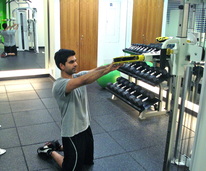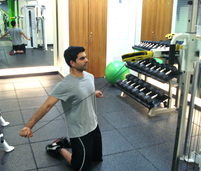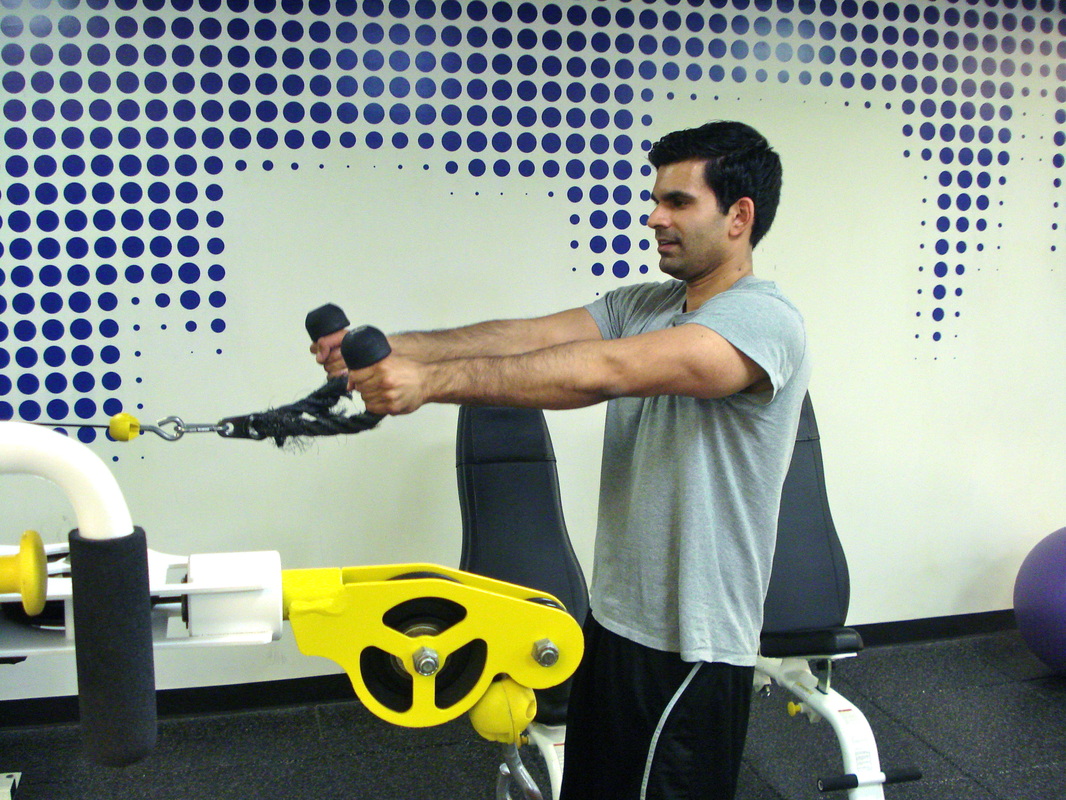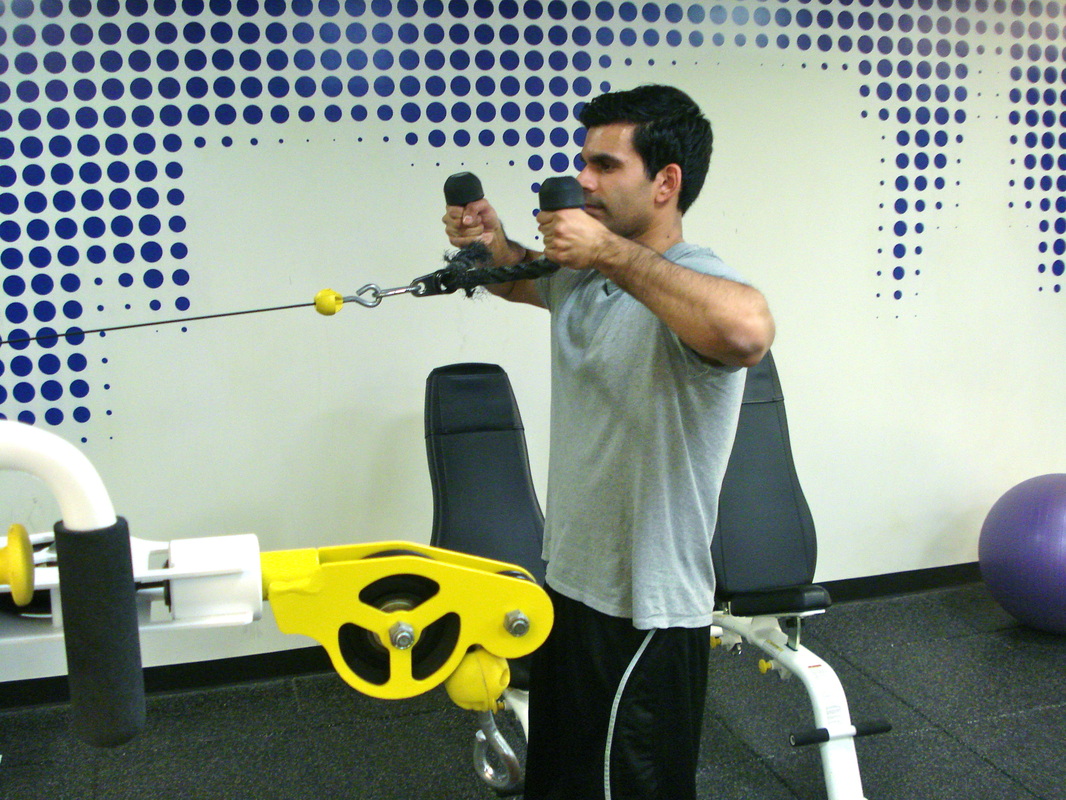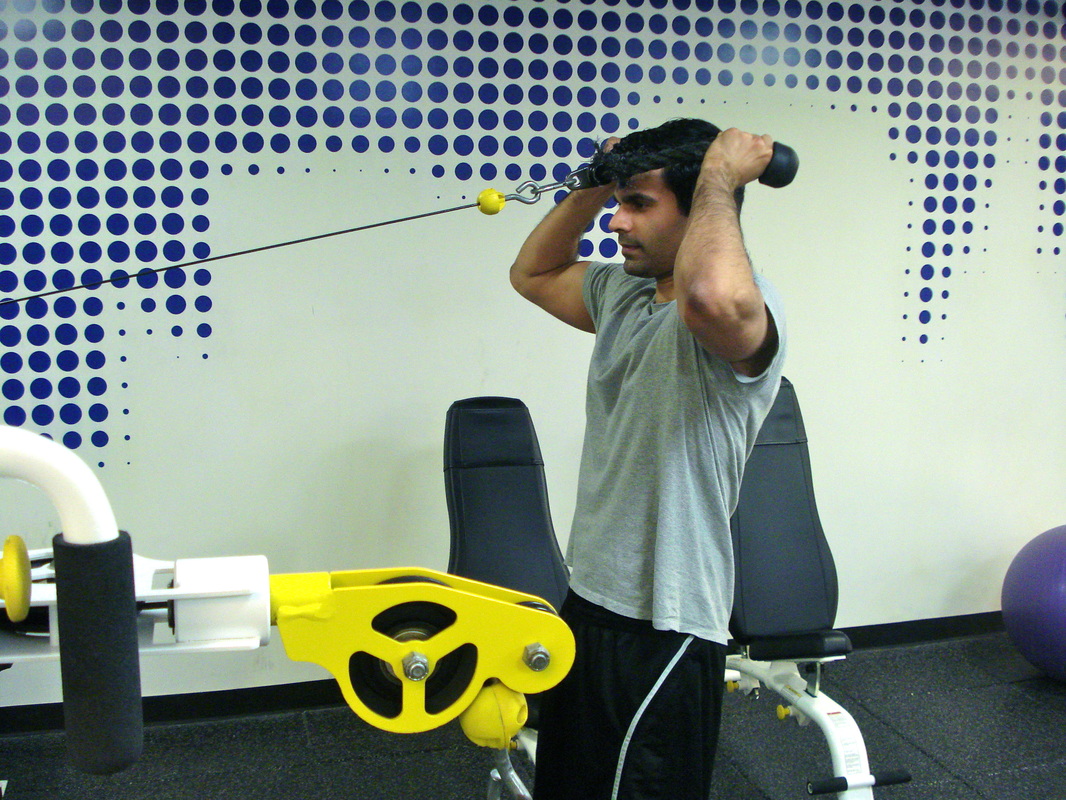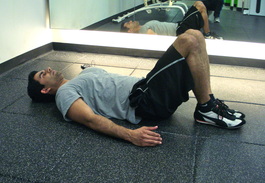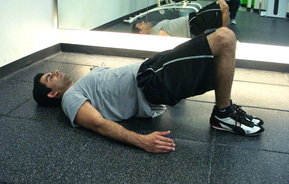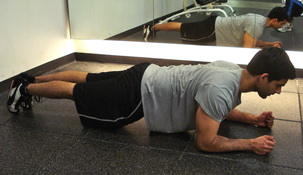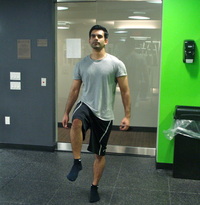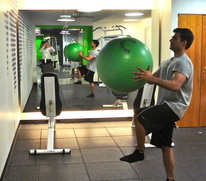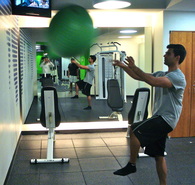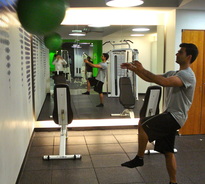Today’s average person spends a lot of time with their body supported. Whether it’s for work, school, or entertainment we tend to sit for long periods of time, often staring at a screen. The seat holds us up and we are supported from our back all the way down to our feet, which are equipped with stabilizing shoes. No wonder when we exert ourselves our body tends to give way to injury. It’s not used to supporting itself. Luckily, these injuries have become predictable.
Here is a list of common body weak spots and ways to strengthen them:
1. Mid Back
The muscles in our mid back are often neglected and their weakness is the root cause of many preventable injuries. Among other functions, these muscles (i.e. mid and lower trapezius, rhomboids) control the positioning of the shoulder blades. When sitting in front of a computer for eight hours there isn’t much need for these muscles to act so they relax and our shoulders droop forward. When we try to lift a heavy object or throw a ball, there is certainly a need for these muscles to act. But are they up for the task? In most cases the answer is no.
The mid back muscles become lax from lack of use and the pectorals become tight creating a muscle imbalance. When stress is placed on these muscles one or several of them strains, causing their owner pain and time away from his or her activities. When the mid back muscles are strong the shoulder blades are properly positioned, the shoulders are placed in a neutral position, and the pectorals are not overburdened. This creates a stable platform for us to perform the activities we love, not only preventing injury but making us stronger in almost all exercises.
Here’s how to accomplish it:
Horizontal Shoulder Abduction & Depression – Set two sides of a cable column at shoulder height. Grab the left cable with your right hand and the right cable with your left hand and kneel down on both knees. Keep your arms straight, pull your hands apart while retracting your shoulder blades down and back. Think about trying to make your shoulder blades meet in the middle of your spine.
Repeat this 10-15 times for 2-3 sets.
2. Rotator Cuff
Rotator cuff injuries are the leading cause of shoulder pain. This set of four small muscles act to stabilize the shoulder, which is the most unstable joint in the body, so you can imagine how hard they work.
Here’s how to make sure they work correctly:
Face Pull – Set a cable column to the height of your forehead and attach a rope grip. Grab the rope with both hands and pull it towards your forehead by pinching you shoulder blades back and bending your elbows. When your shoulders are fully retracted, bring your hands up and back by rotating your shoulders externally. When you’ve reached full external rotation your hands should be directly above your elbows. Slowly bring your hands back down to shoulder height while keeping your shoulder blades pinched back. When your hands reach shoulder height let your shoulder blades move forward. The eccentric phase (bringing the hands back down) is the most important part of this exercise so don’t let the weight pull you down too fast. Learn to control it because this is the specific motion used in many sports which can cause injury.
Repeat this 15 times with light weight. The idea for this exercise is muscle endurance.
3. Glutes
Due to the amount of time we spending sitting, our glutes tend to become lax and sometimes forget how to fire correctly. When the glutes are weak, other smaller muscle groups tend to compensate leading to low back and hamstring strains. Strong glutes help to support and align the spine. Here’s how to remind them how to fire.
Glute Bridge – Lay on your back with your knees bent and feet flat on the floor. Squeeze your glutes to raise your hips off the ground until your body makes a straight line from your knees to your shoulders at a 45 degree angle from the ground. (Do not raise any higher as this can lead to low back strain). Hold at the top and continue squeezing your glutes for two seconds, then relax and let your hips come back down to the ground.
Repeat this 30 times.
4. Core
Our core supports and stabilizes us in everything we do, from athletic activities to standing and even sitting. It’s the reason gravity doesn’t push us straight to the ground. Most of the time the muscles in our core work isometrically to prevent us from bending and rotating when we wouldn’t want to, like while running or lifting something heavy. The core’s most important job is to stabilize the spine so it’s logical that we should train these muscles isometrically.
Here’s how to make sure you’re stable:
Modified Plank – Place your forearms on the ground with your elbows directly under your shoulders. Step back until the only parts of your body touching the ground are your toes and forearms. Pinch your shoulder blades back and tighten your glutes and abdominal muscles. Your body should form a straight line from your head to your heels (the hips should not rise above or fall below this point). Stay in this position for 10-30 seconds. During this time you will be fighting gravity which will try to pull you to the ground. Resist the urge to hold your breath, count the seconds, or breathe frantically. Set a timer and take slow, deep breaths. You will find that you can hold yourself up much longer this way. Repeat this in any amount of sets which it takes you to get to a total of 90 seconds in the plank position (i.e. 9 sets of 10 seconds, 3 sets of 30 seconds, etc.).
This exercise activates the abdominal muscles more than crunches. It is also more functional. Most people don’t have to crunch very often during a typical day, however their spine must constantly be stabilized.
5. Balance
Balance is key to most endeavors. It is also sorely lacking in our “lift as much as you can” or machine based workout culture. Studies done at the University of Wisconsin Medical Center have found that balance training significantly reduced the likelihood of ankle sprains in male and female athletes. Add barefoot balance training to this and you have stronger, more stable musculature and connective tissue in the feet and ankles. This results in optimal foot striking with each step you take. From there the chain goes up. Correct movement at the feet and ankles leads up to the knees, to the hips, and to the spine producing a more efficient motion and a more stable and less injury prone you.
Here’s how to achieve it:
Barefoot Single Leg Stand – Take off your shoes and stand on one foot. Hold this for as long as you can. If you have trouble balancing tighten your core, squeeze your shoulders back, and focus on one spot at eye level far ahead. This should stabilize and bring your center of gravity directly over your foot. Repeat 3 times on the same foot and switch to the other foot. Once this becomes easy, get a partner and have a catch with a swiss ball while standing on one leg. No partner? No problem. Throw the ball against a wall. Catch and repeat.
University of Wisconsin, Hospital and Clinics, Sports Medicine Center, Madison, Wisconsin.
The Effect of a Balance Training Program on the Risk of Ankle Sprains in High School Athletes.
Timothy A. McGuine,* PhD, ATC, and James S. Keene, MDVerhagen E, van der Beek A, Twisk J, Bouter L, Bahr R, van Mechelen W.
The Effect of a Proprioceptive Balance Board Training Program for the Prevention of Ankle Sprains: A Prospective Controlled Trial.
Am J Sports Med. 2004 Sep;32(6):1385-93. Epub 2004 Jul 20.McGuine TA, Keene JS.
The Effect of a Balance Training Program on the Risk of Ankle Sprains in High School Athletes.
Am J Sports Med. 2006 Jul;34(7):1103-11. Epub 2006 Feb 13.
